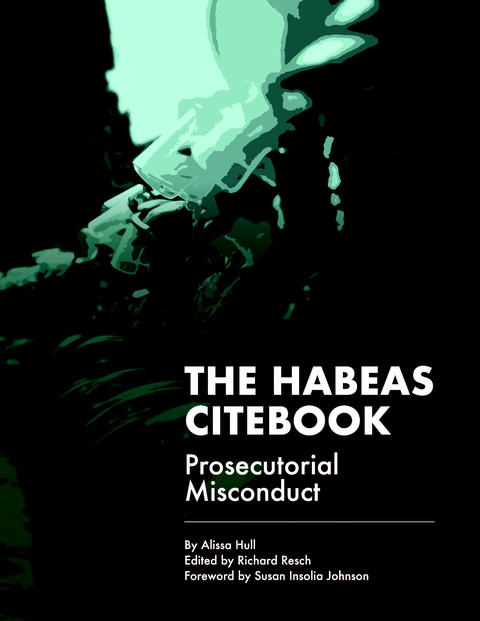Idaho Supreme Court: Drug-Detection Dog Conducted Warrantless Search by Placing Paws on Exterior of Vehicle to Sniff for Drugs
by Richard Resch
In a case of first impression, the Supreme Court of Idaho held that police conducted a warrantless search of a vehicle when a drug-detection dog trespassed against personal property by placing his paws on the exterior of the vehicle and performed a free-air sniff in order to obtain information about the vehicle.
In August 2019, a police officer witnessed Kirby Dorff commit several traffic violations and initiated a traffic stop. Dorff advised that he did not have a valid driver’s license or proof of insurance. During the conversation, a K-9 officer arrived on scene with his drug-detection dog named Nero.
The dog circled the exterior of the vehicle twice. At no time did he breach the interior of the vehicle. However, during his second pass, Nero placed his front paws on the driver’s side door and window to stand up and sniff the “vehicle’s upper seams.” According to his handler, Nero alerted to the presence of drugs during this explicit contact with the vehicle.
Upon Nero’s alert, officers searched the interior of the vehicle and found a pill bottle and a baggie containing white residue that subsequently tested positive for meth. They also recovered a container with “a green leafy residue” in the trunk.
Officers arrested Dorff and found a motel room key in his pocket during a search incident to arrest. The passenger in Dorff’s vehicle then told officers that Dorff “had shown him a bag containing an ounce” of meth in their shared motel room. Police obtained and executed a search warrant for the room and found a bag containing 19 grams of meth and drug paraphernalia. He was charged with multiple drug-related offenses.
Dorff filed a motion to suppress the evidence found in his vehicle and the motel room, arguing that Nero’s “trespass” onto his vehicle constituted a warrantless search without probable cause. The trial court denied the motion, concluding that Nero’s contact with Dorff’s vehicle did not constitute “intermeddling” – that is, didn’t amount to a trespass to chattel at common law – and thus, since Nero didn’t trespass against Dorff’s vehicle, there was no “search” for Fourth Amendment purposes.
Dorff entered a conditional guilty plea, preserving his right to appeal the denial of his suppression motion. He timely appealed.
The Court framed the issue as whether police, using Nero as their agent, performed a warrantless search of Dorff’s vehicle by “trespassing” against the exterior of his vehicle based on the U.S. Supreme Court’s property-based approach to Fourth Amendment analysis articulated in United States v. Jones, 565 U.S. 400 (2012).
The Court began its analysis by noting that the text of the Fourth Amendment evidences a “close connection to property” by focusing on the “right of the people to be secure in their persons, houses, papers, and effects, against unreasonable searches and seizures, shall not be violated.” Id. Traditionally, Fourth Amendment jurisprudence was “tied to common-law trespass.” Id. The Court recounted that it was not until 1967 in Katz v. United States, 389 U.S. 347 (1967), that the U.S. Supreme Court “added to” – but did not replace – the common-law trespassory test under the Fourth Amendment with the “reasonable expectation of privacy” test. Id. (emphasis in original). Although courts may utilize either test in determining whether a search occurred for purposes of the Fourth Amendment, the Court instructed that the traditional trespassory test continues to serve as a “baseline” protection against the government as it existed at the time the Fourth Amendment was adopted. Florida v. Jardines, 569 U.S. 1 (2013).
Turning to the present case, the Court stated that the facts of this case dictate that only the property-based, trespassory test is at issue, not Katz’s reasonable expectation of privacy test. Under the trespassory test, a vehicle is undoubtedly an “effect” as that term is used in the Fourth Amendment. Jones. When that test is applied, specific portions or aspects of an “effect” are not excluded from constitutional protection, e.g., the exterior surface of a vehicle enjoys the same protection as the interior under the trespassory test, the Court explained. See id. While a drug dog’s sniff of the air around the exterior of a vehicle, Illinois v. Caballes, 543 U.S. 405 (2005), or surrounding luggage in a public place, United States v. Place, 462 U.S. 696 (1983), has special status as not constituting a search under Katz’s expectation of privacy test, a drug-dog sniff does not enjoy that same special status under the trespassory test – it’s a search, according to the Court. See Jones; State v. Randall, 496 P.3d 844 (Idaho 2021).
A trespass alone does not constitute a Fourth Amendment search. Jones. Instead, whether Nero performed a Fourth Amendment search when he placed his front paws on the exterior of Dorff’s vehicle depends on whether Nero (1) trespassed against the vehicle (2) for “the purpose of obtaining information” about or related to the vehicle. Id. When the police deploy a drug dog to perform a free-air sniff around a vehicle, it is undoubtedly “for the purpose of obtaining information.” State v. Howard, 496 P.3d 865 (Idaho 2021). Consequently, whether a warrantless Fourth Amendment search occurred hinges on whether Nero committed common law trespass to personal property against Dorff’s vehicle, the Court explained.
After a needlessly lengthy and meandering discussion of English common law from 1791 and the common law in the U.S. from 1868 when the Fourteenth Amendment was adopted, the Court eventually concluded that a trespass to personal property occurs when physical contact with the property amounts to “intermeddling,” which the Court defined by way of examples. That is, brushing up against someone’s purse while walking by is not intermeddling; whereas, resting your hand upon or putting your fingers inside someone else’s purse without permission does amount to intermeddling; according to the Court. Similarly, when a dog’s tail brushes against your vehicle as it walks by, that doesn’t constitute intermeddling in contrast, intermeddling occurs when a dog jumps on the hood of your vehicle or leans on the window or door without permission. Finally, the Court instructed that whether the State’s conduct constitutes intermeddling “is an objective, but often fact-intensive inquiry.” See Jardines; Randall.
Applying the foregoing legal rules to the present case, the Court determined that Nero intermeddled with Dorff’s vehicle by physically placing his front paws on the driver’s side door and window and thereby committed a common law trespass against Dorff’s personal property for the purpose of obtaining information about or in connection with such personal property, i.e., his vehicle. See Jones. Thus, because Nero trespassed against Dorr’s vehicle for the explicit purpose of obtaining information about or related to the vehicle, the Court held that the police engaged in a warrantless Fourth Amendment search and that the trial court erred by concluding Dorff’s Fourth Amendment rights were not violated.
Accordingly, the Court vacated Dorr’s conviction, reversed the denial of his motion to suppress, and remanded the case. See: State v. Dorff, 2023 Ida. LEXIS 30 (2023).
As a digital subscriber to Criminal Legal News, you can access full text and downloads for this and other premium content.
Already a subscriber? Login





